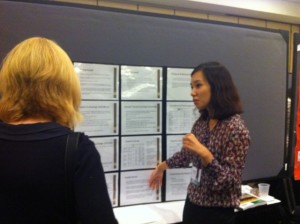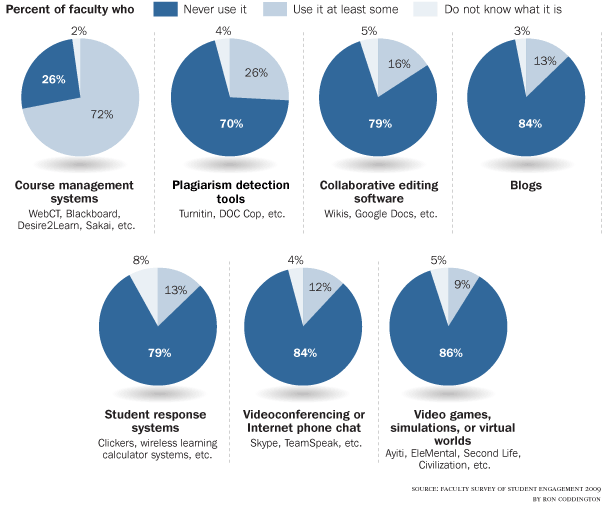Research Presentations at the SITE (tech & teacher education) Conference
The SITE (Society for Information Technology and Teacher Education) conference is starting tomorrow, hosted right here in Austin, TX March 5-9. I am involved in several presentations at the conference. First, Min Wook Ok (Ph.D. student in Special Education) and I will be co-presenting our paper titled “The impact of 1:1 laptop initiatives on pre-service special educators”. Second, I’ll be participating in a roundtable discussion “Exploring tablet computing in teacher education: The UT COE iPad working group” with other UT-affiliated staff and faculty in the College of Education. Below is more detailed information about each of these presentations.
Exploring Tablet Computing in Teacher Education: The UT COE iPad Working Group
ID: 35606
Type: Roundtable Topic: Information Technology Diffusion/Integration
Room: 13 Mon, Mar. 5 11:30 AM-12:30 PM
Authors: Karen French, The University of Texas at Austin, USA; Michelle Read, The University of Texas at Austin, USA; Detra Price-Dennis, The University of Texas at Austin, USA; Hyo-Jin Yoon, The University of Texas at Austin, USA; Haydee Rodriguez, The University of Texas at Austin, USA; Joan Hughes, The University of Texas at Austin, USA; Barbara Pazey, The University of Texas at Austin, USA
Abstract: The College of Education at The University of Texas at Austin has formed a cross-disciplinary working group to explore the uses and learning implications of incorporating iPad tablet computers into classroom activities in higher education settings. At this roundtable, representatives from the working group and the instructional technology support team with whom they are working will discuss with their peers what they have learned about implementing a project of this kind in a teacher education program. Presenters will engage participants in an active discussion of their own experience, knowledge and ideas. Topics will include implications for teaching methods, student response and outcomes, and the logistics required to ensure the success of an initiative of this kind.
The impact of 1:1 laptop initiatives on pre-service special educators
ID: 35453
Type: Poster/Demo Topic: Special Education
Room: 14
Wed, Mar. 7 6:30 PM-8:00 PM
Authors: Min Wook Ok, The University of Texas at Austin, USA; Joan Hughes, University of Texas at Austin, USA
Abstract: This paper provides results of a pilot study investigating the impact and effects of the technology-integration program on pre-service special educators. Results of survey data comprehensively analyzed and interpreted will be reported. Moreover, the study will provide not only the impact of the program but also any need to change or improve in the program for supporting pre-service special educators.
Faculty use of technology: general faculty (chronicle of educ stats) and in teacher education (our stats)
A report from The Chronicle of Higher Education on faculty’s use of technology yielded the following data:
Image Source: The Chronicle of Higher Education; http://chronicle.com/article/Professors-Use-of/123682; June 25, 2010.
Discussion around these data include questions of whether technology makes a better teacher. Certainly an excellent question! We do not believe that using technology will magically make a teacher a better teacher – in fact, at first, many teachers (and university faculty) may face some hiccups as they learn to teacher in a more student-centered way, as many of these technological tools are best used by students to learn. Faculty do not experience hiccups when they adopt technology in support of the usual, teacher-directed pedagogy that we know very well.
We (Joan Hughes with Gloria Gonzales Dholakia, Yu-Chi Wen, and Hyo-Jin Yoon) have a book chapter currently under review called “The iron grip of productivity software within teacher education.” In the chapter, we discuss the importance of faculty modeling of optimal technology use for preservice teachers, as they learn a lot about what they will do as future teachers from what they experience in their teacher preparation program. Yet, we also describe productivity software’s (tools like PowerPoint, word processing, and spreadsheet suites) enduring grip as the most used digital technologies among preservice teachers during teacher education.
The Chronicle’s data (above) reminds us of the data we have collected from preservice teachers. Clearly, there’s ample room to discuss why productivity is emphasized so much (been around a long time, has affordances across disciplinary areas). But we believe an overemphasis on productivity tools is not adequately preparing new teachers for the knowledge society in which we/they live, work, and educate.
We are not faulting teacher education or PK-12 schools or preservice teachers. But we recommend that this focus will not change without concerted change efforts in both teacher education and PK-12 institutions because change in one won’t really have a ripple effect without simultaneous and complementary change in the other.
A glimpse into our data … reveals the high-use digital technology tools by student teachers in 2004-2007 were: email, presentation, search engine, web browser, word processing, and digital movies (student teachers are required to do a lesson study involving video recording their teaching). Overall, data from our student teacher respondents in 2004-2007 and 2008-2009 reflect a low, but emergent use of minimal Web 2.0 tools such as blogs, podcasts, wiki, and social bookmarking. We feel this is a positive trend toward better preparation of teachers to integrate technology into their future PK-12 teaching, but we feel a necessity for more emphasis and progress.
Determining Teachers’ Digital Technology Self-Efficacy
My colleague, Dr. Jayson Richardson, at the University of Kentucky emailed me inquiring about how we measure digital technology self-efficacy which he saw on some of our slides in SlideShare.
I figured that others might also be interested. I created a PDF of our scale measure which is based off of an earlier measure created by Cassidy & Eachus (2002). We made changes to the language and to some items that we felt were not pertinent once we expanded the notion of “computer” to that of “digital technology.” You can see our measure below with the items. You can download this file on slideshare.
We must acknowledge the good work of Cassidy & Eachus.
Cassidy, S., & Eachus, P. (2002). Developing the Computer User Self-Efficacy (CUSE) Scale: Investigating the Relationship Between Computer Self-Efficacy, Gender, and Experience with Computers. Journal of Educational Computing Research, 26(2), 133-153. http://baywood.metapress.com/link.asp?id=jgjr0kvlhrf7gcnv


